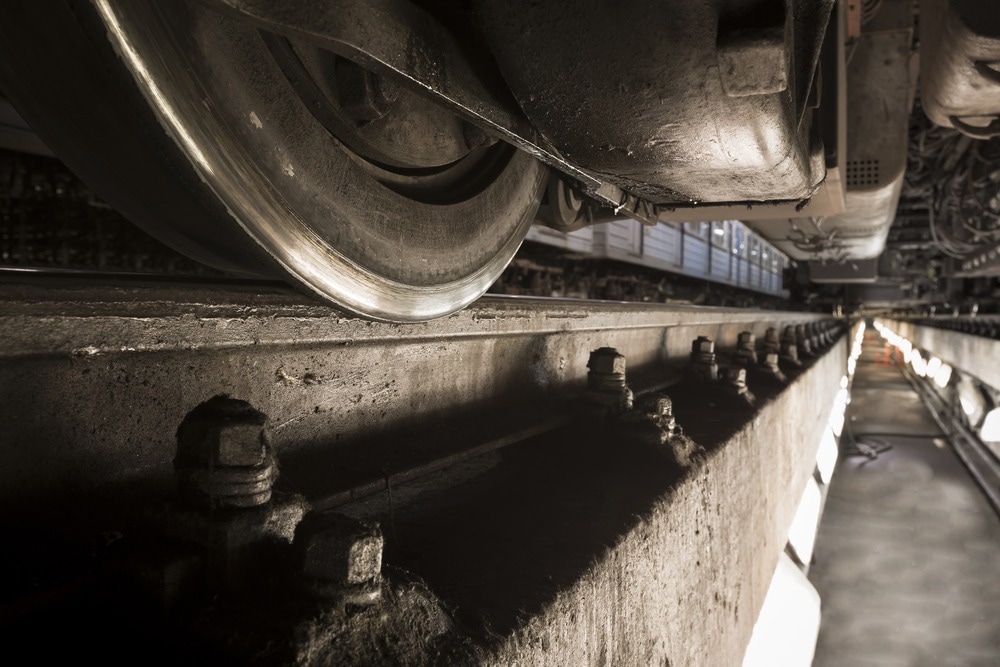A study published in Coatings used laser-cladding technology to enhance the sliding frictional properties of subway wheels with metallic alloy deposition. It analyzes the tribological properties of nickel- and iron-based alloy powders applied to subway wheel coatings.

Study: Investigation on Sliding Tribological Properties of Laser Cladding Alloy Coating for Subway Wheels. Image Credit: momente/Shutterstock.com
Importance of Wheels in Operational Safety of Subway Vehicles
Rail transportation has been established as one of the most significant alternatives to reduce traffic congestion, particularly in urban areas, due to its great efficiency and capacity.
Although there haven’t been any significant or serious safety mishaps, industrial growth and the advancement of technology have increased the importance of trains operating safely.
Wheels are one of the essential parts of a subway vehicle. Subway lines feature more complicated conditions than high-speed trains, as frequent braking and acceleration can easily damage wheels.
Common types of wheel damage include wheel rim wear, tread scuffing, tread wear, tread peeling, and wheel rim loss. In addition, the relative movement between the wheels and rails might cause abrasion of the wheel treads during wheel maintenance.
It is essential to research the wheel sliding friction performance to ensure the train’s safety.
Laser Cladding Technology for Studying Wheel Sliding Friction
Laser cladding deposits a surface layer of metallic alloys on the substrate. It has many potential applications in repairing high-value-added parts and possesses strong wear and rolling contact fatigue crack resistance.
Laser-cladding technology strengthens materials, allowing the substrate’s surface to acquire superior qualities. Most researchers believe that laser-cladding technology can use various alloy powders to produce alloy coatings with wear resistance, friction reduction, corrosion resistance, fatigue resistance, and oxidation resistance.
Selecting the appropriate alloy powder is crucial for laser cladding technology. Powders with Fe and Ni bases are frequently used in rail and wheel construction. However, these two powders differ in composition, functionality, and properties.
Analyzing the Dry Sliding Friction Wear Properties of Ni and Fe Alloys in Subway Wheel Repair
Researchers compared the performance of Ni and Fe-based alloy coatings in subway wheel repairs.
For this, the ER9 material of the subway wheels was coated with a Ni- and Fe-based alloy with laser-melting technology. The resulting coatings were densely organized and defect-free, with no fractures or pores.
The microstructure morphology, interface elements, and phase types of the coatings were studied using energy dispersive spectroscopy (EDS), scanning electron microscopy (SEM), 3D optical morphology, and X-ray diffractometer (XRD).
The coating’s mechanical properties were examined with the MFT-EC4000 reciprocating electrochemical wear and friction tester and Vickers microhardness tester. Ni-based coating with γ(Ni, Fe), Cr23C6, and Cr7C3 phases and Fe-based coating with γ-Fe, (Fe-Cr-Ni), and (Fe, Ni) solid solution phases were chosen for this experiment.
Significant Findings of the Study
In nickel-based alloys, chromium deposition enhanced the interatomic bonds and contributed to solid-solution strengthening. In addition, the presence of the hard carbide phase and the solid solution in the structure of the clad layer increased the material’s compressive and tensile strength.
The Ni-based coating experienced more severe oxidation at the end of the wear and friction test when adhesive wear was the primary wear mechanism. The Fe-based coating had a hardness of 715 HV0.7, 2.86 times harder than the basic material. The Ni-based coating had a maximum hardness of 268.4 HV0.7.
In addition, the Ni-based coating has a lower friction coefficient than the Fe-based coating. The Ni-based coating is roughly four times more durable than the Fe-based coating in terms of wear and friction.
Due to the existence of the solid-solution phase, the Fe-based coating exhibited solid-solution strengthening. A local quenching occurred due to molten coating preheating, which increased the tissue’s hardness and wear resistance.
Ni-based coatings functioned as expected at high temperatures, and their hardness and friction qualities were also on the low side. However, the economic efficiency of Ni-based alloys was poor.
This study demonstrates that laser-cladding technology can enhance the hardness and wear resistance of wheels. Additionally, it is shown that when the alloy coating is identical to the underlying material, the alloy powder can result in a more noticeable performance gain.
Fe-based coatings are unsuitable for wheel cladding due to the optimal wear relationship between the rail and wheel and the coating's high wear resistance and hardness.
Reference
Xiao, Q., Zhang, B., & Yang, W. (2022) Investigation on Sliding Tribological Properties of Laser Cladding Alloy Coating for Subway Wheels. Coatings. https://www.mdpi.com/2079-6412/12/10/1561/htm
Disclaimer: The views expressed here are those of the author expressed in their private capacity and do not necessarily represent the views of AZoM.com Limited T/A AZoNetwork the owner and operator of this website. This disclaimer forms part of the Terms and conditions of use of this website.